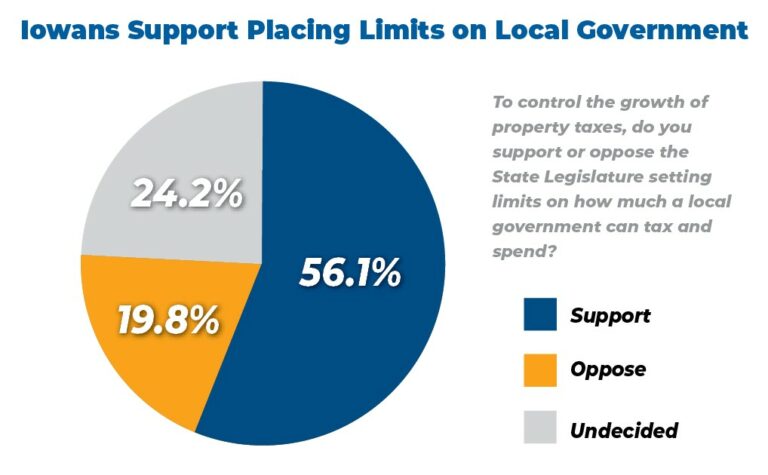Spending limits are similar to speed limits in a school zone, both are designed to protect. In the case of local governments, they apply the brakes to slow spending down.
BACKGROUND
Over the past 20 years, the average annual rate of growth for property tax revenue has been: 4.1 percent for cities, 4.2 percent for county general services, and 3.7 percent for county rural services. In response to concerns over continually rising property taxes, the Legislature passed SF 634 in 2019, known as a property tax accountability and transparency measure. This legislation created a 2 percent “soft cap” on city and county budgets but excluded school districts. The law also required local governments to publish their budget notices and hearings in hopes citizens would attend and be involved in the local budgeting process.
PROBLEM
While 2019 property tax accountability and transparency law was well intentioned, it has not provided the envisioned property tax relief. The 2 percent “soft cap” takes a two-thirds majority vote of a city council or county supervisor board to override which has proven to be an easy hurdle to clear for local governments. Since school districts were not subject to the reforms, the largest driver or property tax bills remains unaffected. And despite more required disclosure and public hearings during the budgeting process, the entire property tax system is still too complex for citizens to easily understand. Finally, the law was not able to diminish local governments’ ability to take advantage of assessment windfalls. Too often taxpayers are still told that the rates are going down, only to find that they are paying more in property taxes.
The levies for debt service, capital improvements, and unified law enforcement are not included within the revenue limits established in the 2019 legislation. If a spending limitation exempts numerous budget items, it is less effective. New Jersey, for example, established a 2 percent property tax cap but exemptions for pensions, health benefits, debt, construction, and emergencies weakened the reform.
SOLUTION
One solution for property tax relief is strengthening the 2 percent “soft cap” placed on city and county budgets and including school districts under this cap. A stronger spending limitation on all local governments, including school districts, would require voters to approve a budget increase and avoid interfering with the market’s ability to determine property valuations. It would also avoid the pitfall of exempting various budget categories. Having a stronger cap would not be unusual; examples of property levy limitations abound.
New York, a progressive, high-tax state, is not known for pro-taxpayer policies. Even so, the Empire State made permanent a property tax revenue cap limiting the annual growth of taxes levied by local governments and school districts to the lesser of 2 percent or the rate of inflation. For a local government to exceed the cap, the governing authority must approve it by a supermajority vote. The property tax cap has not hindered local governments or public education but has successfully saved taxpayers billions.
In 2019, the Texas legislature passed a property tax reform law (Senate Bill 2) that requires local governments to “hold an election if they wish to raise 3.5 percent more property tax revenue than the previous year.” Cities and counties must go to the people for a vote before they can increase revenue beyond that limit, adjusted for any new local growth. “To put it bluntly, Senate Bill 2 requires cities and counties to stay within their taxpayers’ ability to afford their local government,” wrote Texas Lieutenant Governor Dan Patrick. The measure also limited the growth of school district revenue to 2.5 percent.
Iowa State Senator Brad Zaun (SF 2104) introduced a property tax reform bill with a strict spending limitation. In part, the bill would reform the 2019 law to lower the 2 percent budget increase to 1 percent and require budget increases to be approved by voters during elections, in which they would have to win 60 percent of the vote.
Requiring local governments to earn a vote of the people to raise spending forces them to be more accountable and to justify new spending. Economist Daniel Mitchell describes spending limits as similar to speed limits in a school zone, both are designed to protect. In the case of local governments, they apply the brakes to slow spending down.

Source: ITR Foundation Poll
This piece is part of an upcoming comprehensive Iowa property tax tool kit.
